Adobe Logo Remix
August 2014 ––For many years Adobe has worked with designers in the community in the creation of their identities, each bringing their own unique style and allowing Adobe to curate an amazing body of work to represent their brand. For this project, Adobe was seeking visionary artists who embody a multi-disciplinary approach to creativity that is unique—maximizing Adobe’s products both creatively and intellectually, traditionally and non-traditionally.
As such, Adobe invited GMUNK to participate in their Logo Remix project. The goal was to provide Adobe with an intriguing version of their logo, and interpreted in and reflective of the munkoStylez. The brand was a locked configuration, but the canvas was wide open and Munko and his crew at VT Pro Design certainly intended to play.
As such, Adobe invited GMUNK to participate in their Logo Remix project. The goal was to provide Adobe with an intriguing version of their logo, and interpreted in and reflective of the munkoStylez. The brand was a locked configuration, but the canvas was wide open and Munko and his crew at VT Pro Design certainly intended to play.
The Film
–– 01The Treatment
–– 02Adobe products are all about capturing the intangible and opening it up to creative vision. In this same vein of thought, we want to explore ways of containing light itself, using a practical, extruded Adobe logo as the encapsulating vessel. Four executions harness different optical properties to present an ethereal medium with a visceral tangibility.
The public-facing product will be a film documenting these four optical experiments. As designers ourselves, we want to embrace the brand using a language that will be fully appreciated by Adobe’s community of vibrant and talented artists.
The public-facing product will be a film documenting these four optical experiments. As designers ourselves, we want to embrace the brand using a language that will be fully appreciated by Adobe’s community of vibrant and talented artists.
–– 02


Laser / Single Spectrum
–– 03The first iteration explores high-frequency light properties, reconstructing the physical 3D logo using one-way mirrors. With lasers, we narrow our spectrum down to a single color, which we bounce through the mirrors.
Trapped inside, the lasers create a complex network of graphic lines and minimalist illuminated patterns - creating a seemingly endless spiral of laser and light detailings within the infinite mirrored surfaces.
Trapped inside, the lasers create a complex network of graphic lines and minimalist illuminated patterns - creating a seemingly endless spiral of laser and light detailings within the infinite mirrored surfaces.



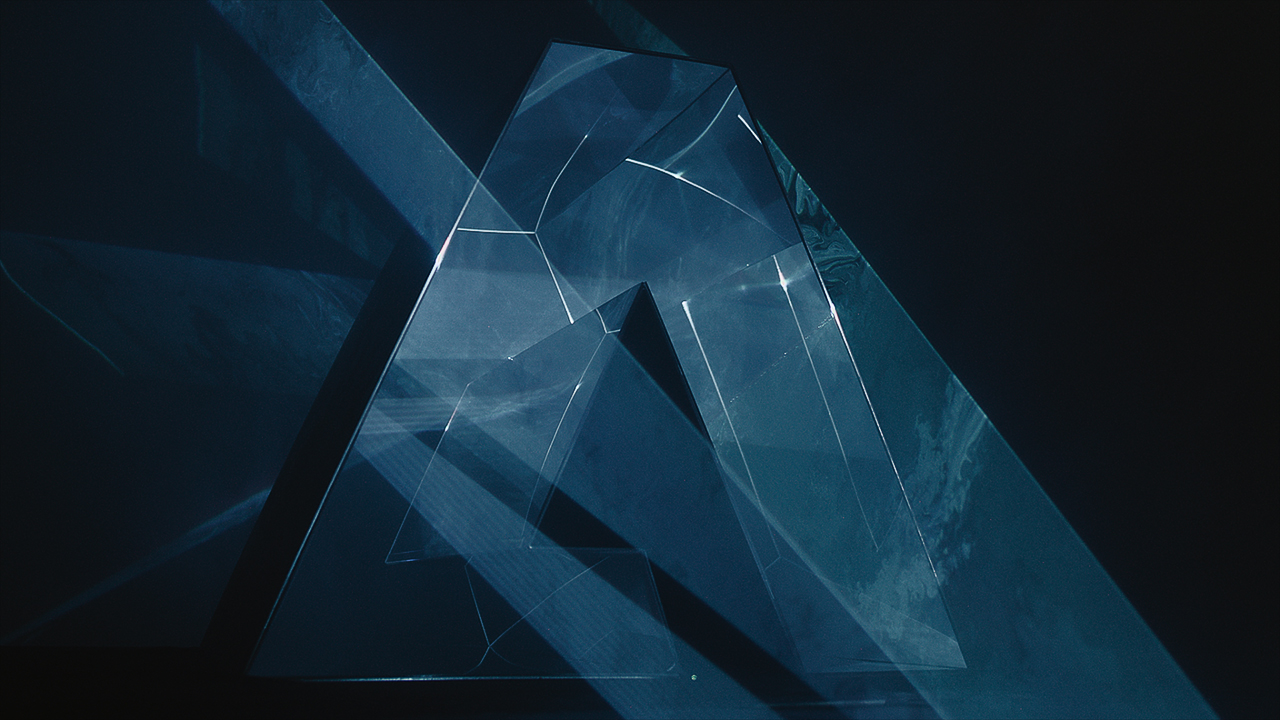






Technical Breakdown
–– 04To accomplish the single spectrum we created the adobe logo out of steel and used that as a surface to mount mirrored panels to its interior. Then to accomplish the laser refraction we used a 6 Watt full color laser projector, driving imported sequences and patterns with custom software.. With the lighting instruments we picked high output spot fixtures specifically because of their speed, narrow beam control, and flexibility.
We controlled the lighting with a traditional lighting controller and were able to create cue stack sequences for playback. We then elevated the shooting platform in order to give us strong angles of incidence for projecting light and laser into the logo which gave us the most reflection in the interior mirrored surfaces.
We controlled the lighting with a traditional lighting controller and were able to create cue stack sequences for playback. We then elevated the shooting platform in order to give us strong angles of incidence for projecting light and laser into the logo which gave us the most reflection in the interior mirrored surfaces.




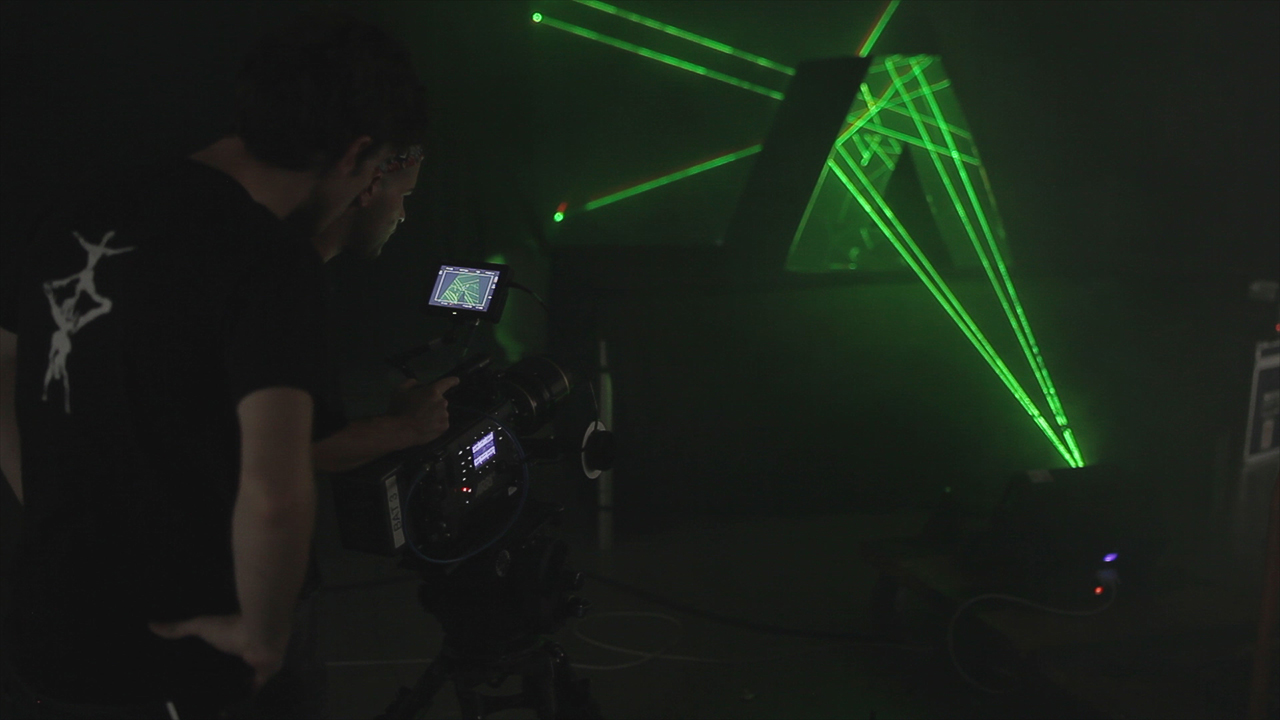
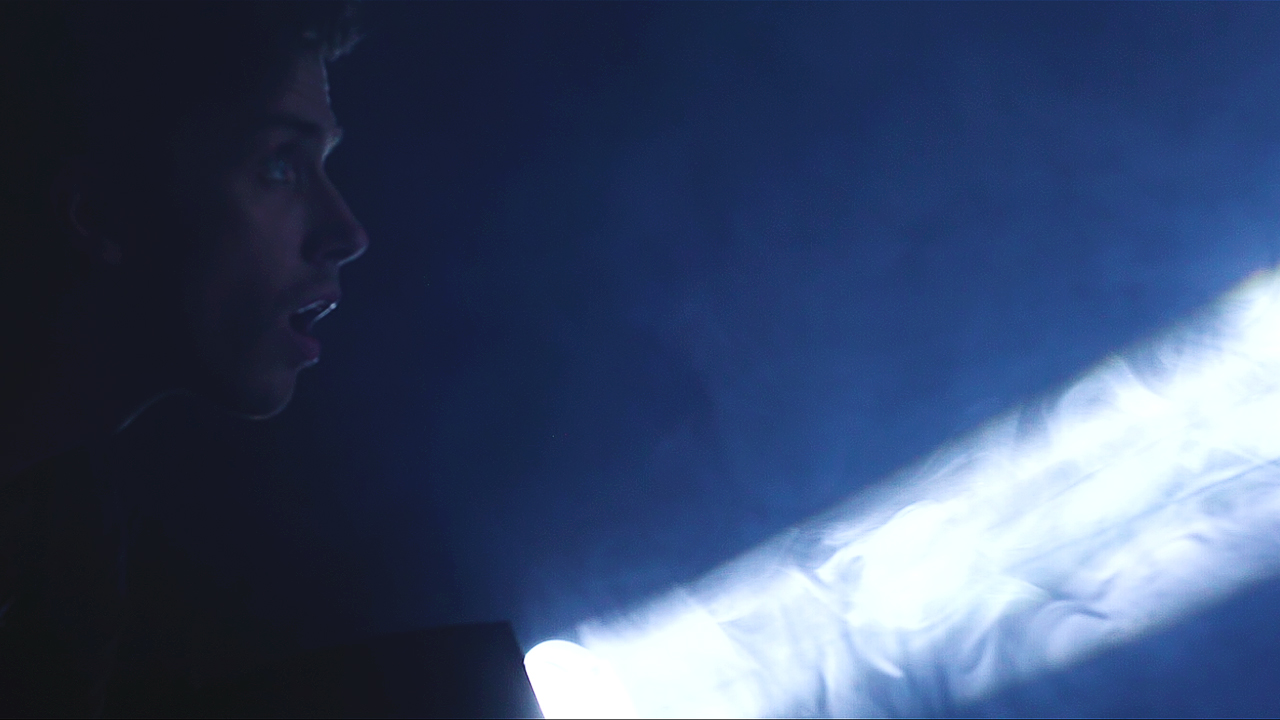

LED / Electroluminescence
–– 05The second iteration explores electroluminescence within the visible spectrum by building an acrylic Adobe logo and lining it with a dense array of LED lights. Using graphic sequencing, we will inform the color and luminance state of each light to create rich patterns bursting with color and rhythm.
External light sources, such as high-density spotlights, could provide extra color and light cones in and around the logo, making a more compelling composition to compliment the LED elements on the inside of the form.
External light sources, such as high-density spotlights, could provide extra color and light cones in and around the logo, making a more compelling composition to compliment the LED elements on the inside of the form.












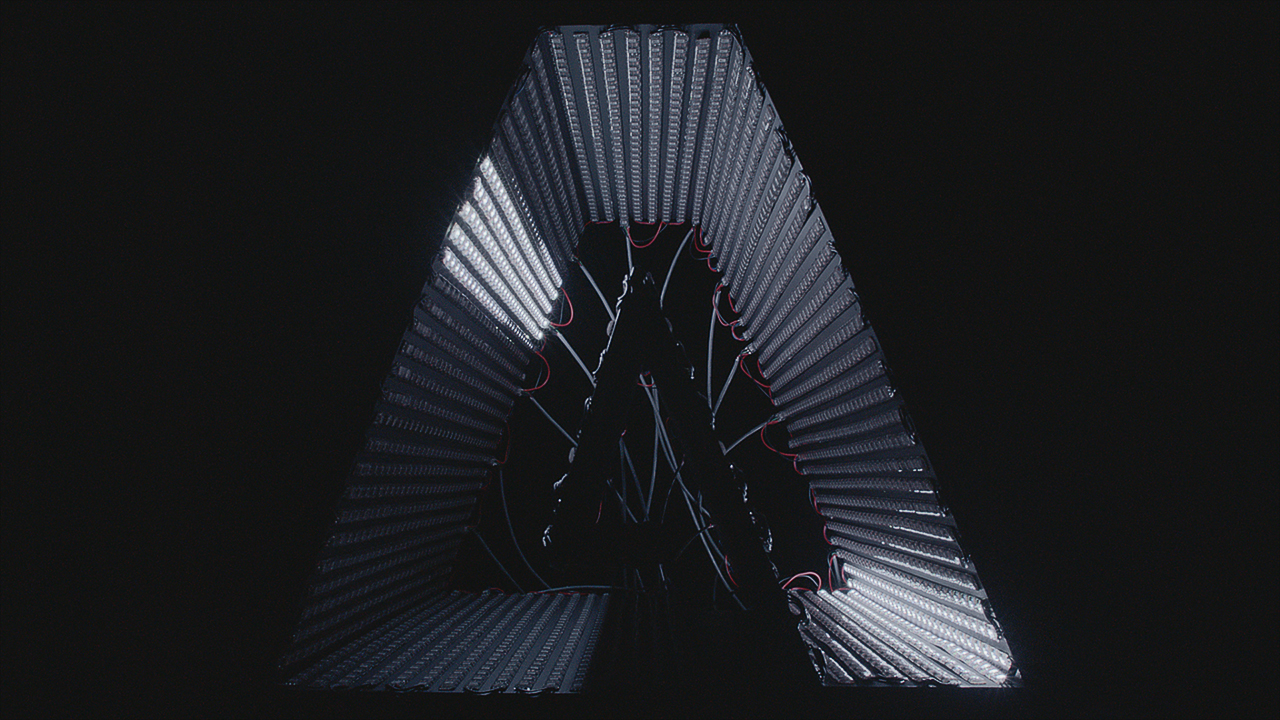




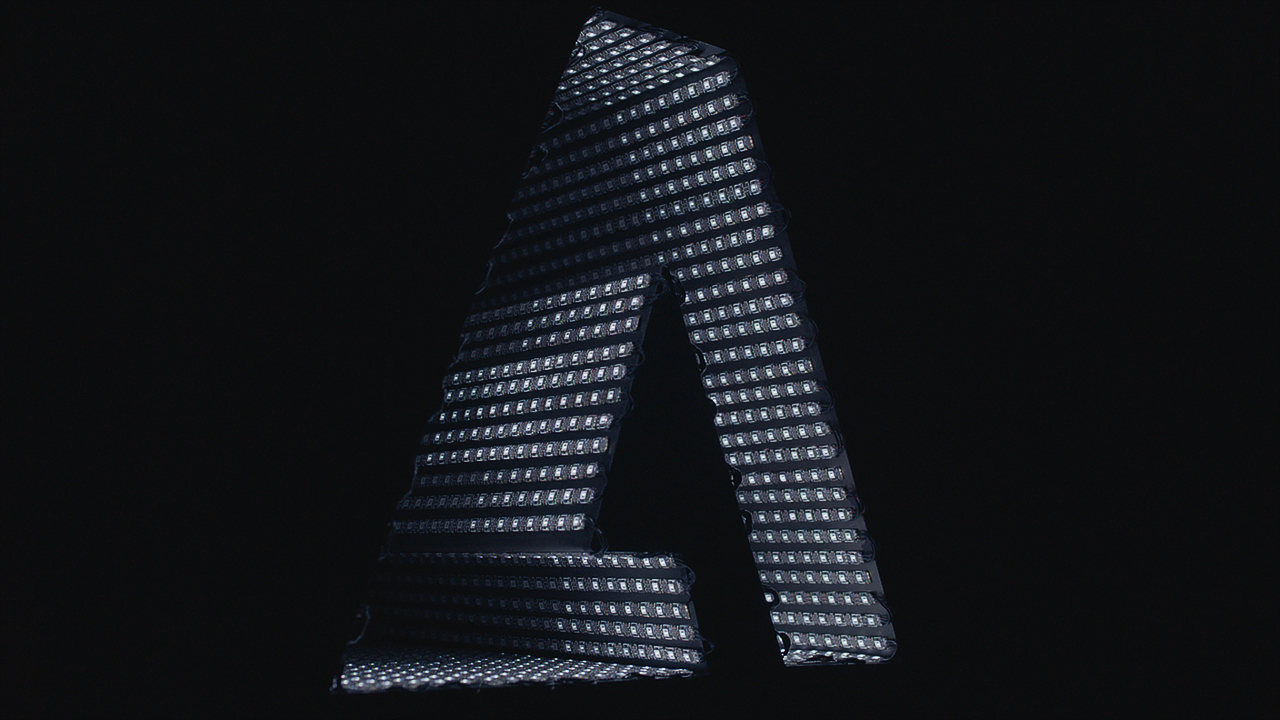


Technical Breakdown
–– 06For the LED form of the logo we played with two different concepts, the first being an acrylic form with its outer edges illuminated with video driven LED, highlighting the exterior lines of the logo. The second was a handmade LED video array encompassing the inner faces of the volumetric logo. This LED video array consisted of some 7,000 pixels that were all driven by graphic video sequences, giving us the ability to create complex patterns of lighting sequences but also on the spot flexible control and exploration of the visible light emitted inside of the structure. Building the array was probably one of the larger challenges of the project, as it was an intricate custom piece driven by a number of different controllers.
Smaller in scale then the steel frame used for the single spectrum approach, we then took the structure and applied LED pixel tape directly to the interior. Using SPI pixel drivers for every five strips of LEDs, which were all running back to an Artnet to DMX converter receiving 16 universes of control from a laptop directly decoding video to artnet values. Using standard lighting protocol made programming and decoding relatively straight-forward with existing hardware, also giving us a ton of flexibility for directing how the patterns would move around the structure, whether it was around the interior, from forward to back, or randomly generated patterns of video and light.
Smaller in scale then the steel frame used for the single spectrum approach, we then took the structure and applied LED pixel tape directly to the interior. Using SPI pixel drivers for every five strips of LEDs, which were all running back to an Artnet to DMX converter receiving 16 universes of control from a laptop directly decoding video to artnet values. Using standard lighting protocol made programming and decoding relatively straight-forward with existing hardware, also giving us a ton of flexibility for directing how the patterns would move around the structure, whether it was around the interior, from forward to back, or randomly generated patterns of video and light.







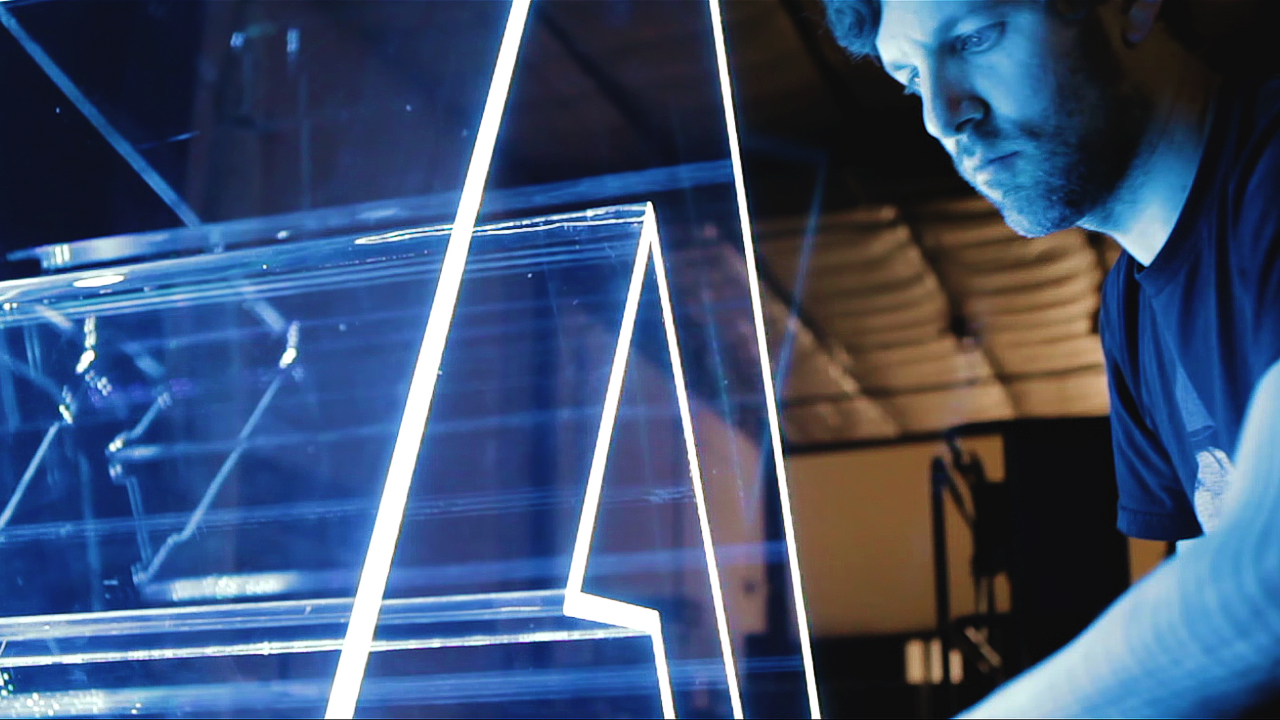
Refraction / Optical Projection
–– 07As our third iteration, the high density, single-spectrum laser line work becomes translated into optical art, which we project onto a surface behind the logo. The logo is constructed of acrylic materials that refract the projection itself through its “lens.”
The entire light source is the environment, filling the frame. In this case, the element of “capture” is where the environment distorts through the logo, bound by its edges to transmit some compelling practical Op Art through the acrylic form.
The entire light source is the environment, filling the frame. In this case, the element of “capture” is where the environment distorts through the logo, bound by its edges to transmit some compelling practical Op Art through the acrylic form.








Technical Breakdown
–– 08Using a video surface and animated optical art patterns we were able to control a lot of different aspects of its motion and ways in which the video was perceived through the refractive form. To get a video surface with as much brightness as possible we framed an 80 Inch TV up behind the shooting platform and placed the acrylic logo directly against the TVs face. Then using video mapping software, PNG masks, and custom animated content we played video content in the interior and exterior of the logo from.
The reflectiveness and refraction naturally presented by the angles and surfaces of the acrylic logo form. Using video control like this gave us so much room to play and even generate different optical illusion patterns and sequences that produced really interesting results. Using a TV large enough to fill the entirety of the form of the logo was essential, and the extremely high contrast ratio gave us some really stunning results since all of our content was black and white in composition.
The reflectiveness and refraction naturally presented by the angles and surfaces of the acrylic logo form. Using video control like this gave us so much room to play and even generate different optical illusion patterns and sequences that produced really interesting results. Using a TV large enough to fill the entirety of the form of the logo was essential, and the extremely high contrast ratio gave us some really stunning results since all of our content was black and white in composition.

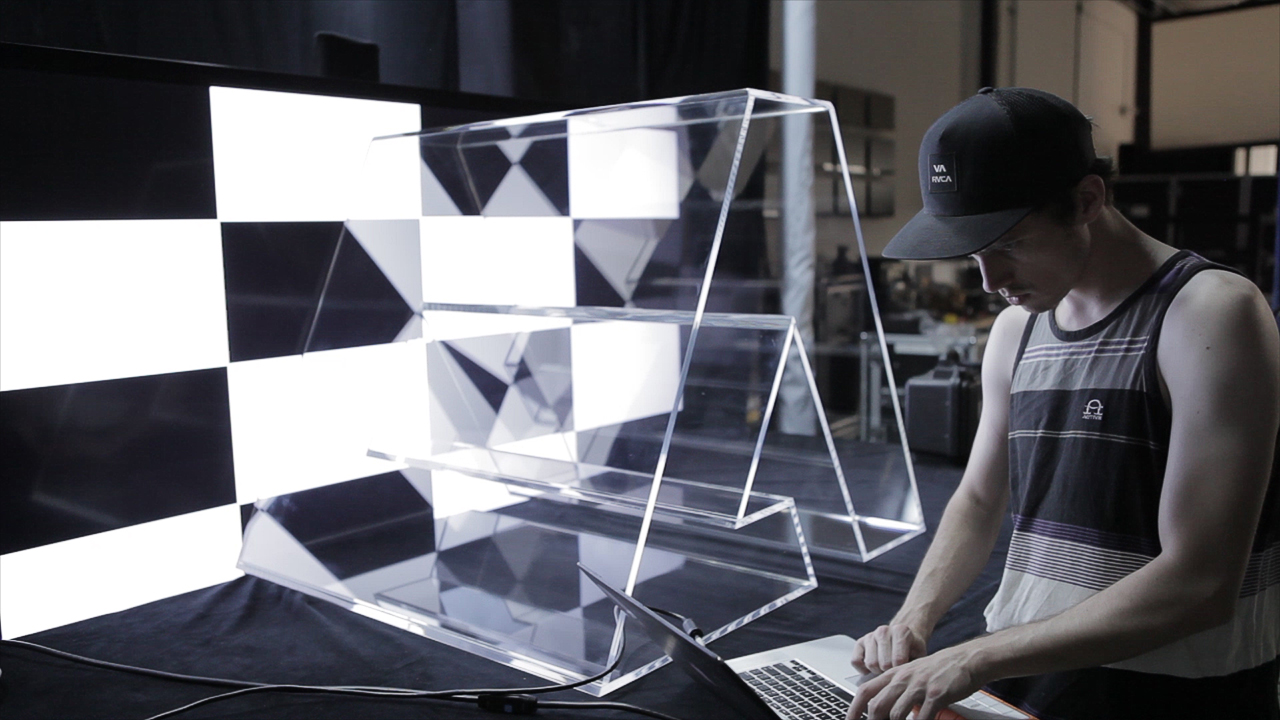


Full-Spectrum / Infrared
–– 09The final execution steps outside the visible spectrum, revisiting our first experiment and presenting it in a new light. Capturing full-spectrum increases the intensity of the visible light spectrum we see in the film and contributes to a wider fidelity of color and form.
This technique brings the set of experiments full-circle and captures Adobe’s ethos of expanding views and enhancing perspectives to deliver astonishing results. The full-spectrum footage delivered a rich palette of texture, mood and movement to bring us to a captivating conclusion.
This technique brings the set of experiments full-circle and captures Adobe’s ethos of expanding views and enhancing perspectives to deliver astonishing results. The full-spectrum footage delivered a rich palette of texture, mood and movement to bring us to a captivating conclusion.
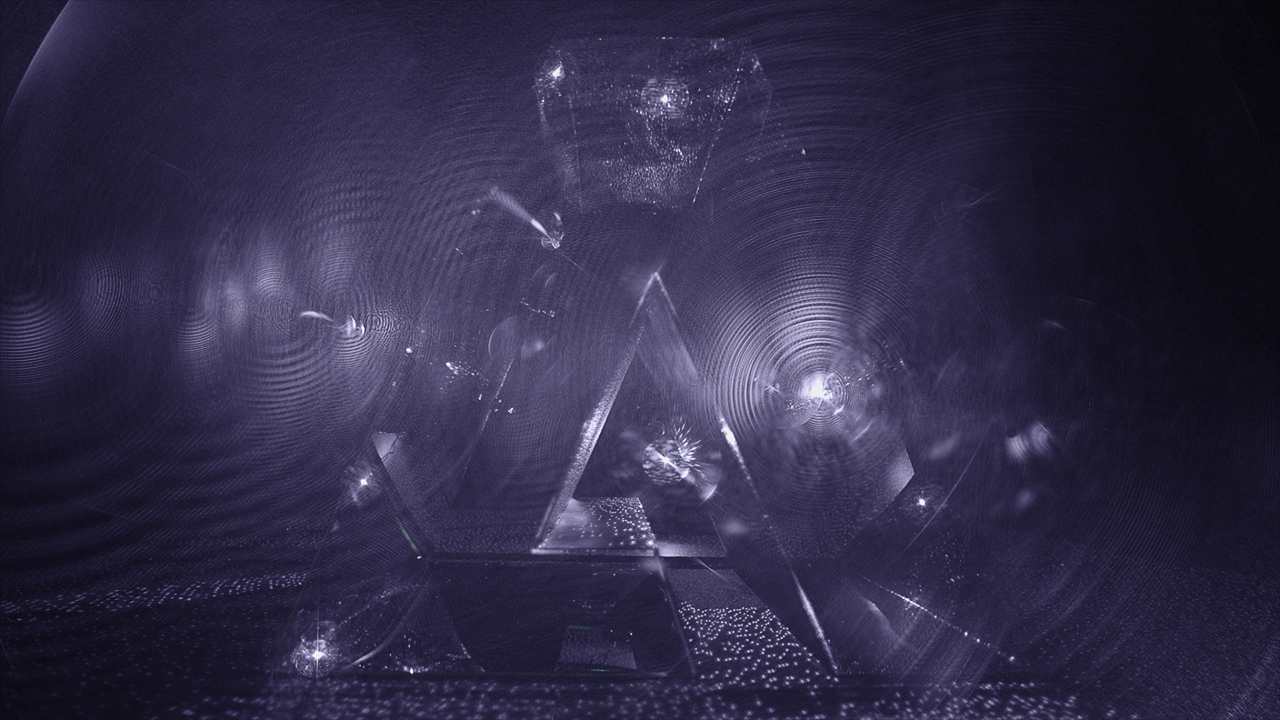



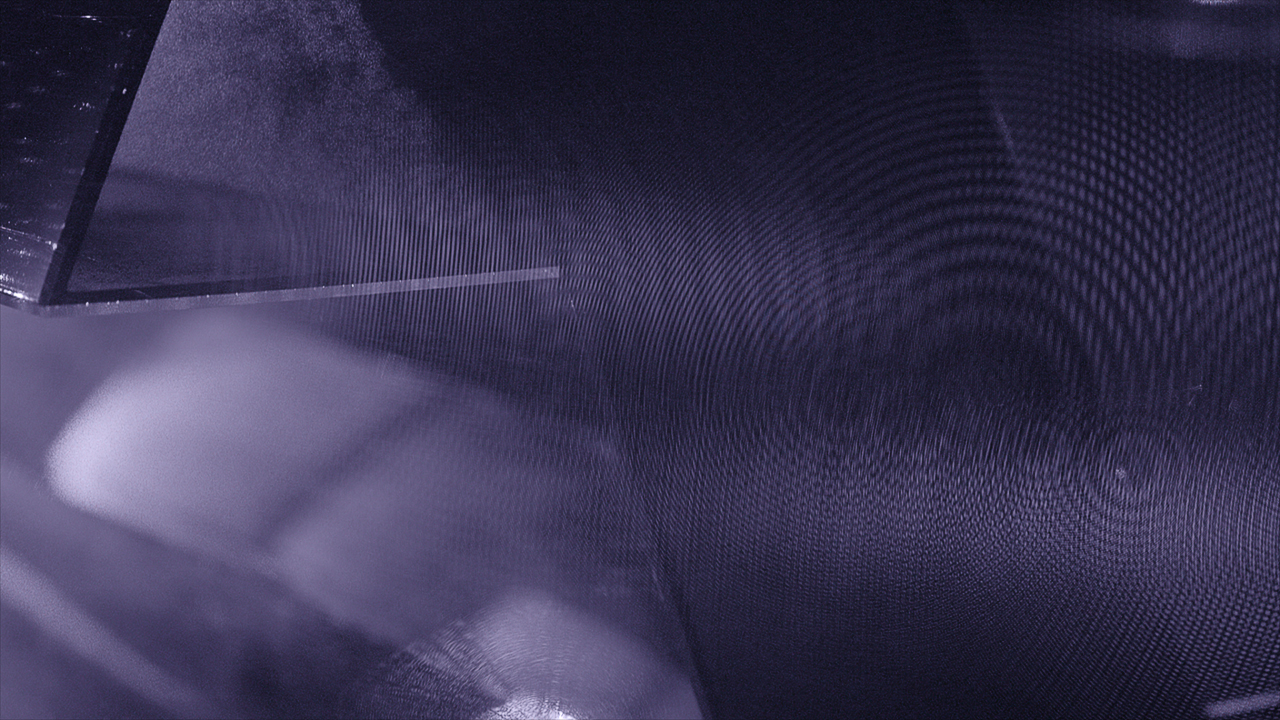



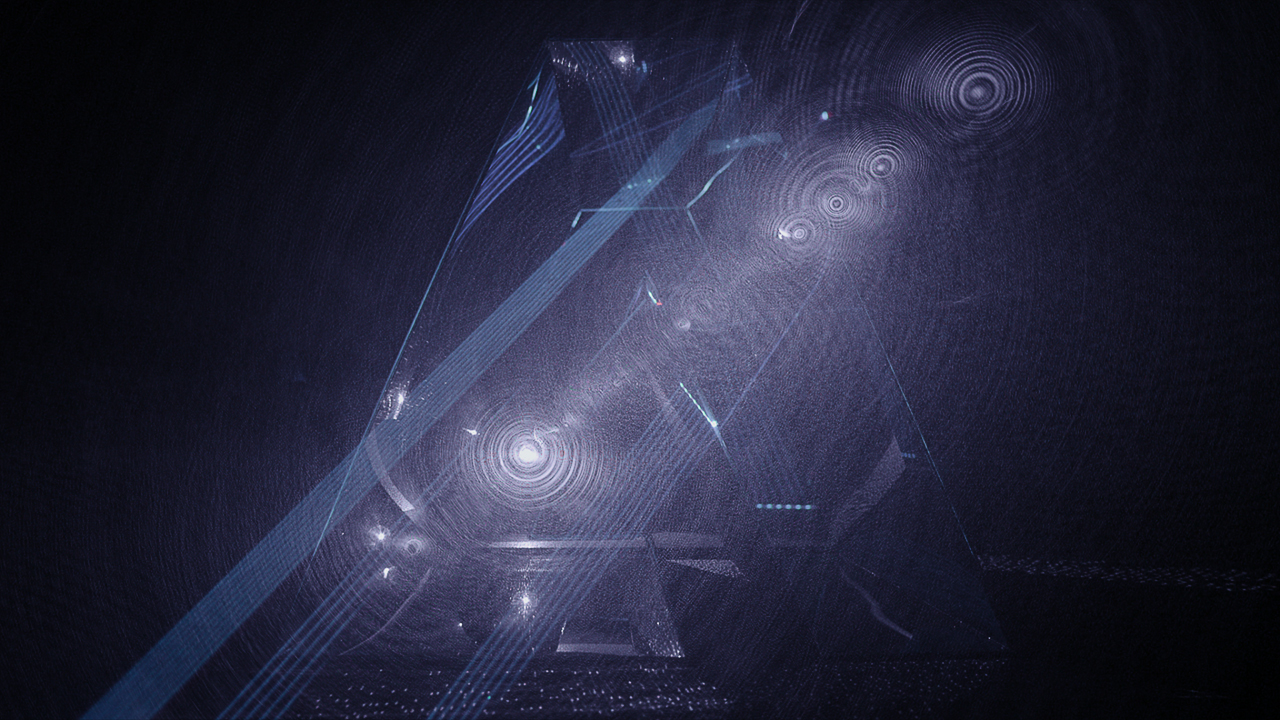
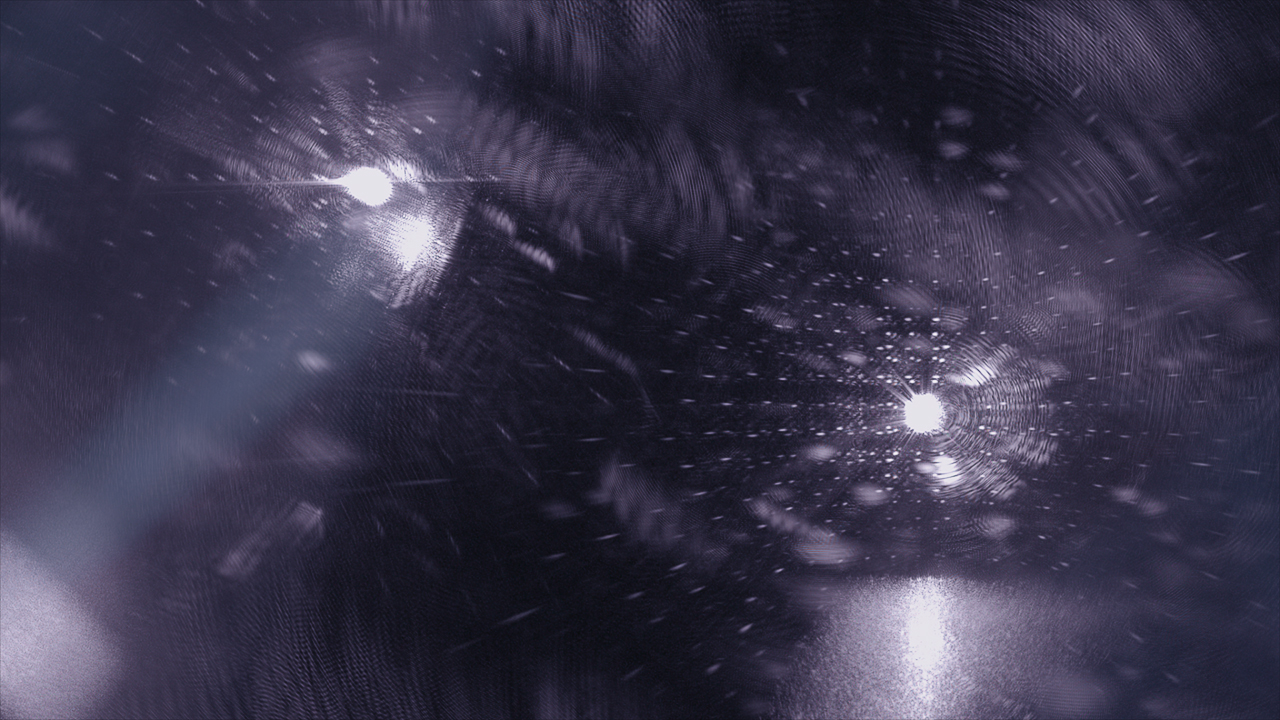
Technical Breakdown
–– 10When exploring the full spectrum of light we experimented with a lot of infrared light sources but were really drawn to the invisible point clouds that are projected from the Kinect, as the units beautifully bathed the logo in thousands of points of infrared light. Using two Kinects, we were able to project infrared point clouds from two different angles, one that was 15 feet high and focused over the entire shooting platform.
The second placed behind the mirrored logo, attaching it to a skater dolly to bring a subtle movement to the dot arrays. All of this resulted in a very unique visual language rarely seen in photographic sequences since we were using a custom modified full-spectrum RED Epic to capture these infrared images.
The second placed behind the mirrored logo, attaching it to a skater dolly to bring a subtle movement to the dot arrays. All of this resulted in a very unique visual language rarely seen in photographic sequences since we were using a custom modified full-spectrum RED Epic to capture these infrared images.





The Process Film
–– 12Adobe asking for maximum flavor and subsequently allowing carte blanche on this brief immediately turned it into a passion project for everyone involved, and also granted the crew a ton of breathing room to experiment with a variety of techniques - ultimately paid dividends for the final film.. Knowing this was a labor of love - a true passion project and the type of output and experimentation was definitely at a healthy clip.
Also this brief brought together a crew that has together created beauty for years and years, and although the hours put in seemed like an intense amount, the fun and absurdity had with all the bae's n suckling fish cancel out all the sweat and bloody noses that were experienced in the haze garage of VT Pro.
Also this brief brought together a crew that has together created beauty for years and years, and although the hours put in seemed like an intense amount, the fun and absurdity had with all the bae's n suckling fish cancel out all the sweat and bloody noses that were experienced in the haze garage of VT Pro.
–– 12
Adobe Logo Remix Credit List
Production Company: VT Pro Design
Director: GMUNK
Design Director: Michael Fullman
Technical Director: Michael Fullman
Director of Photography: Kevin Gosselin, Joe Picard
Process Photography: Sam Cividanis, Christian Bruno
Graphics Animators: Michael Rigley, Michael Fullman
Editor: Bradley G Munkowitz
Process Editor: Sam Cividanis
Music: Keith Ruggiero
Colorist: Prince Wesley Hare
Production Company: VT Pro Design
Director: GMUNK
Design Director: Michael Fullman
Technical Director: Michael Fullman
Director of Photography: Kevin Gosselin, Joe Picard
Process Photography: Sam Cividanis, Christian Bruno
Graphics Animators: Michael Rigley, Michael Fullman
Editor: Bradley G Munkowitz
Process Editor: Sam Cividanis
Music: Keith Ruggiero
Colorist: Prince Wesley Hare